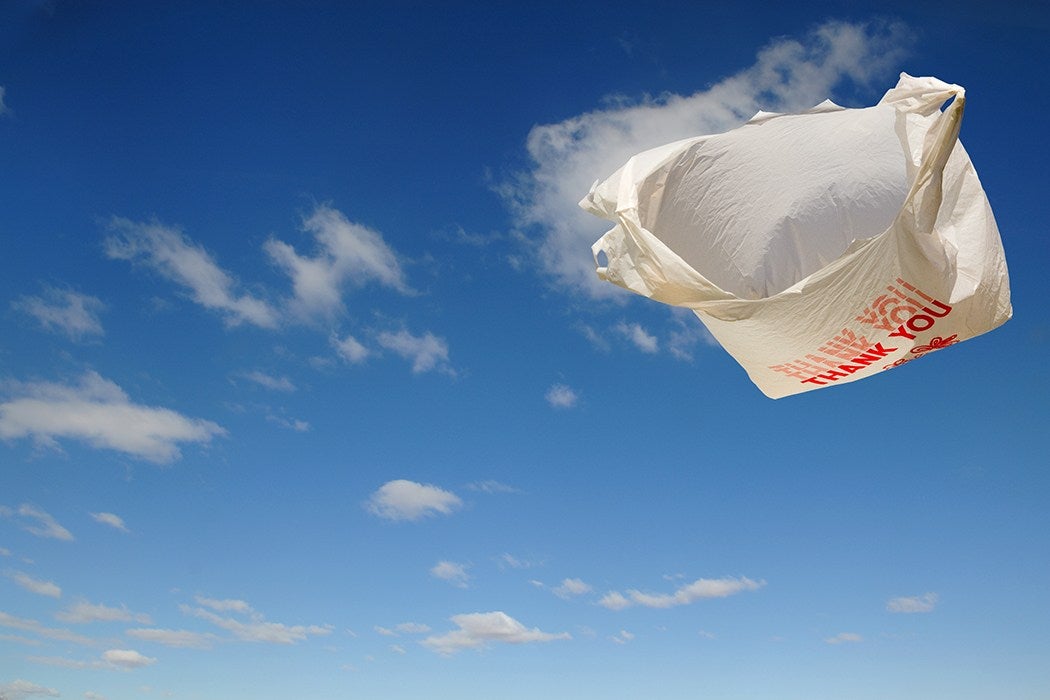Just recently, New York State’s governor blocked a bill that would have charged a 5-cent fee for every disposable shopping bag in New York City. The governor’s objections centered around certain financial provisions, but many city residents are annoyed that the plastic litter problem remains unaddressed. How bad is the problem? And what is the best way to get rid of the ubiquitous bags?
Disposable bags remain in the environment for years, and plastic bags in particular have been blamed for causing damaging floods when they clog up storm drains. Like all plastic products, bags are made from fossil fuel derivatives and some of the greatest environmental impact stems from their manufacture (although of course paper bags also require energy and materials to make).
While plastic bags unquestionably harm marine life, however, the danger of bags in particular compared with other plastic debris is uncertain. And by all accounts, bags themselves account for a small (around 2%) percentage of waste. So why focus on plastic bags?
In some views, the real problem with plastic bags is how they symbolize unsustainable, throwaway culture. There is some evidence that tackling bags can impact general attitudes. Following a campaign of persuasion and education, merchants in Modbury, in Devon, England, completely stopped providing disposable plastic bags. Soon, other merchants and individuals began taking steps to reduce their individual environmental footprints, for example investing in better energy efficiency and using other types of sustainable packing materials. Then again, these efforts may have resulted as much from the personal persuasion campaign that led to the ban as from the ban itself.
For a larger municipality that wants to reduce bag use, what is the most effective approach? One method is to mandate bag strength; some countries ban flimsy bags that are less likely to be reused. Some countries have completely banned bags. The most common approach is, like New York City’s aborted attempt, a fee. The Republic of Ireland introduced a 0.15 Euro tax per disposable bag and use declined by more than 90%. Formal studies show that fees are much more effective than incentives; a 5-cent fee in Maryland resulted in far more dramatic declines in bag use than a 5-cent payment to customers who brought their own bag. It’s not clear why incentives don’t work, but fees are especially effective when framed as a tax. Americans in particular seem to be highly motivated to avoid taxes.
Authorities looking to reduce waste should take heed of these results. Waste disposal is a large expense, and discouraging waste through fees seems to provoke less wasteful behavior.







